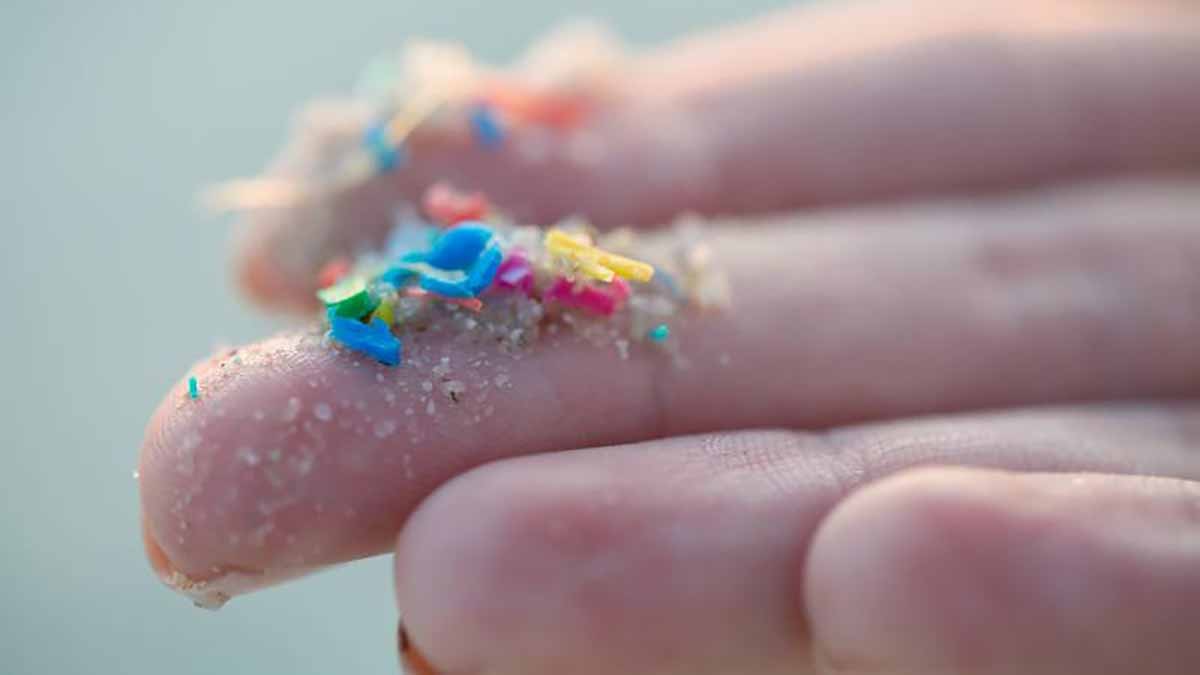How to reduce micro-plastics contamination
Microplastics have been detected in food consumed by humans or in the air. Therefore, they may affect human health through food consumption or inhalation. Ingested or inhaled microplastics may accumulate in the body and trigger an immune response or cause local particle toxicity.
The PlastChem Report report outlines chemicals of concern that can be used by international regulators , including those attending the International Negotiating Committee on Plastic Pollution. The committee is part of the United Nations Environment Programme, which has committed to developing a Global Plastics Treaty between 175 nations by the end of 2024.
This report is important , said pediatrician and biology professor Dr. Philip Landrigan, director of the Program for Global Public Health and the Common Good and the Global Observatory on Planetary Health at Boston College.
"There are many more unregulated chemicals that we're just unaware of how they may be hazardous to our own health or the environment," said Wagner, an associate professor of biology at the Norwegian University of Science and Technology in Trondheim.
"The most important criterion we used is toxicity," Wagner said. "Many of these chemicals are known to be very toxic for human health or the environment. They are carcinogenic or mutagenic or toxic to reproduction. Some have organ-specific toxicity, typically the liver, as that is where many of the chemicals are absorbed from circulation."
Other chemicals like phthalates, bisphenols, flame retardants and pesticides are also endocrine disruptors, interfering with the body's hormones and contributing to obesity, low birth weight, gestational diabetes, some cancers, birth defects and neurodevelopmental disorders, Wagner said.
Microplastic particles can be small enough to infiltrate biological barriers such as the gut, skin and placental tissue. We are all now partially plastic – but is there any way to minimise our exposure?
At the moment, says Stephanie Wright, an environmental toxicologist at Imperial College, London, a lack of epidemiological and in-human data means we don't yet know the harmful effects of microplastics, but "I would say reducing particle exposure in general (including microplastic) is likely to be beneficial". But avoiding the stuff is a tall order, considering it's in the "air, drinking water, dust and food".
Food and drink sealed in plastic has long been associated with cleanliness, purity and protection from contamination, but we now know that some of the highest exposures to microplastics, says Wright, "are likely to come from processed and packaged foods and drinks". The shedding of plastic is increased when containers are exposed to heat. "Hot water in plastic-lined cups and takeaway containers also release micro- and nanoparticles, in some cases trillions per litre, although whether these are true plastic particles is unknown."
Wright says that to reduce exposure to microplastics, "I would start by not heating anything in plastic, or consuming hot liquid that has come into contact with plastic". This includes microwaving food in Tupperware or ready-to-heat products such as boil-in-the-bag rice and "food-grade nylon used for food packaging, as liners for baking pans in restaurants and commercial kitchens and in slow cookers in household kitchens".
When it comes to water, she chooses tap over bottled: "Some bottled waters – including glass bottles – contain thousands of microplastic particles per litre." And, ideally, she would take it filtered. When I mention filtering to Mark Taylor, chief environmental scientist at the Environmental Protection Authority in the Australian state of Victoria, he points out that home water filters are usually plastic, too: "Ultimately it will start to shed because it will degrade."
The way forward, Mark says, is "balancing the risk of microplastics versus practical actions and lifespan".
At one end of the scale sits a plastic heart valve, which is essential. Whereas fruit sealed in plastic is unnecessary. "You can think about the furnishings and the clothes that you acquire, and buy more natural fabrics," says Taylor. "Instead of having a polyester carpet, you could have a wool carpet." Natural fibres are often more expensive, but second-hand is always an option.
At one end of the scale sits a plastic heart valve, which is essential. Whereas fruit sealed in plastic is unnecessary. "You can think about the furnishings and the clothes that you acquire, and buy more natural fabrics," says Taylor. "Instead of having a polyester carpet, you could have a wool carpet." Natural fibres are often more expensive, but second-hand is always an option
Keeping a clean house is something anyone can do to reduce exposure. "The carpets, the curtains, the sofa, most of those are probably not made from fully natural fabrics, and they degrade and their fibres accumulate," he says. All that dust and fluff that balls up like tumbleweed under sofas, or twinkles in sunbeams after you plump a cushion, will contain plastic fibres.
"It's very clear, whether you're dealing with microplastics or trace metals such as lead, zinc, cadmium and arsenic that migrate into a home, that regular vacuuming is really effective at reducing the load." If you don't vacuum, the dust remobilises and, adds Taylor, "deposits in open water vessels, on your fruit, on people's hands, kitchen utensils".
The older the particles are, the more toxic they can become. They can harbour pathogenic microbes and take on other pollutants such as heavy metals. "And then if you swallow that microplastic, you're swallowing a small dose of another harmful chemical as well." These chemicals include, "polyaromatic hydrocarbons, plasticisers like phenol A that are used in things like furnishings and packaging – they can have hormone mimicking or carcinogenic properties. Heavy metals like copper, vanadium, mercury, lead. Cadmium contaminated sediments have already become associated with plastics."
https://www.theguardian.com/lifeandstyle/2023/jul/10/air-drinking-water-dust-food-how-to-reduce-exposure-microplastics
https://edition.cnn.com/2024/03/14/health/toxic-unregulated-chemicals-report-wellness/index.html

